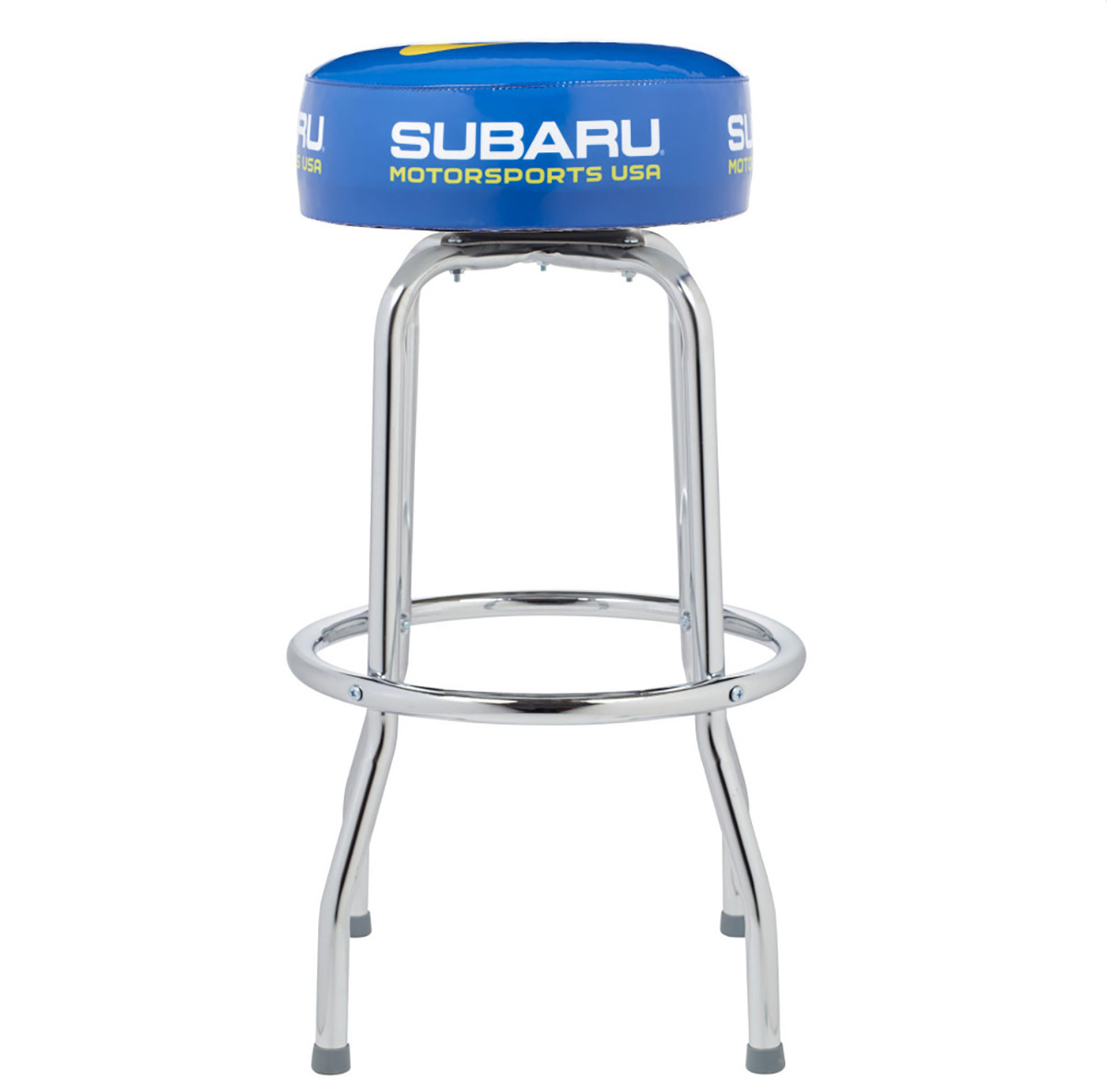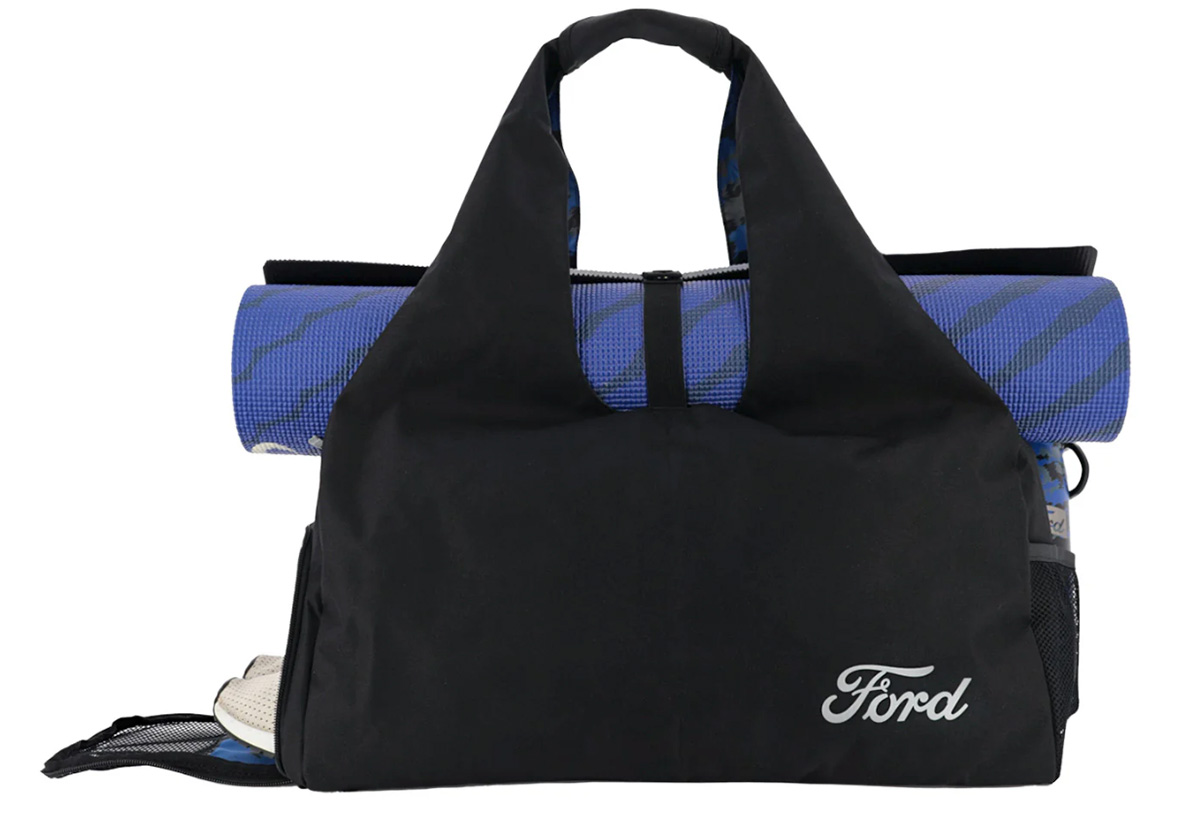Living
‘We’ve got Ph.D.s working as file clerks’
Group combats anti-trans bias, connect welcoming businesses with talent


Allyson Robinson (left) was forced out of her role as head of OutServe-SLDN this week, offering a reminder of the need for more trans visibility in the LGBT movement. Ruby Corado (middle) is a local trans rights advocate who welcomes the new Association of Transgender Professionals; and Bob Witeck (right) is a local adviser to ATP, which is headquartered in New York.
Employment discrimination against transgender people is a staggering problem for LGBT rights advocates in the United States with unemployment rates twice the national average, according to the National Center for Transgender Equality.
But the newly formed Association of Transgender Professionals is taking on an even broader mission — fighting for inclusion on a global scale.
“We’re already getting requests to help other countries, like the U.K.,” says ATP’s executive director Denise Norris. “There are folks in a lot of places who are excited that we are available to the public.”
The very term “transgender,” she notes, is an imperfect one.
“‘Transgender’ is a very U.S. concept,” says Norris. “It’s very Western in its model; it’s based upon the gender binary, so the challenge is how do we look at workplace inclusion on an international scale.”
ATP, co-founded by Norris and Joe McCormack, is a non-profit organization dedicated to improving employment rates for transgender people by building acceptance in the workplace, helping trans people learn how to find jobs and by providing businesses a channel to reach out to transgender talent. The organization is headquartered in New York, but has advisers in most major urban areas of the country. In D.C., longtime advocate Bob Witeck of Witeck Communications is an ATP adviser.
“The rate of unemployment is about 200 percent of the national average for the trans community in general, and 400 percent for trans people of color,” Norris says. “ATP is about building acceptance inside the workplace and in employers, and about helping our community learn how to get jobs. Many of us thought we wouldn’t have real jobs and don’t know how to interview, or don’t know how to dress for success.”
Just this week came a reminder about the need for more trans visibility in the broader LGBT movement, as Allyson Robinson, a trans woman, was forced to resign as executive director of OutServe-SLDN.
Norris noted that many ATP members are military veterans.
“One cannot serve with Pride if one is commanded to do so in the closet,” she said. “Allyson’s role at OutServe-SLDN was a beacon to all by demonstrating that transgender was finally an equal partner in the struggle for LGBT equality.”
ATP helps trans people find jobs in all sectors of the economy, and is not limited to helping those who have MBAs or other degrees. Unemployment at the entry level is considered just as important to combat.
In addition to directly helping transgender people seek employment, ATP also helps companies and organizations seek transgender employees. As Norris explains, it is difficult for many accepting companies to advertise that they are transgender friendly.
“There are no avenues for the companies that are transgender friendly,” she says, “they don’t know how to recruit to us. There are no recruiting channels. … In many cases of employment, we don’t even know who wants to hire us — who doesn’t care about gender expression.”
Both Norris and McCormack have corporate backgrounds. In 1993, McCormack founded McCormack and Associates (now McCormack and Warren), which he says was the first gay-identified executive search firm in the U.S.
“My observation as a recruiter is that the transgender population, of which many people are talented and accomplished, is the most unemployed and underemployed sector of our community because of this discrimination,” McCormack says. “Recruiters who often are gatekeepers are concerned that their clients may be biased against transgender people. They don’t even give them the opportunity to consider them, so the company would be trans friendly, but there is this bias in the recruiting profession that is a real barrier for transgender people.”
Norris founded the educational and direct-action group, The Transsexual Menace, in 1993. She has worked in the corporate sector since around that same year, and currently is a consultant for the multinational management-consulting firm, Accenture. In addition to working with clients, Norris advises the firm on how to be more inclusive and accepting of diverse gender expression.
McCormack and Norris said that based on their corporate experience, they know that inclusion appeals to many large corporations.
“I can talk corporate. I know what motivates employers. A lot of advocacy groups are not talking the same language as employers,” Norris says. “There’s this concept called ‘corporate talent,’ which is why ‘LGB’ recruiting is very hot. We know diverse teams have a statistical likelihood of making better products. Trans is the last untapped pool of diversity talents. We’ve got Ph.D.s working as file clerks, and geologists working in back stores.”
As ATP undergoes the process of gaining its own non-profit status, the association is operating under the auspices of the New York LGBT Center. It is mostly funded by donations, and by grants from large foundations. ATP has received a $10,000 grant from the Pallette Foundation of New York, and a $25,000 challenge grant from the Calamus Foundation.
ATP is inclusive of those in the transgender community who do not identify within the binary of male or female. The association’s goal is to make the workplace accepting of all forms of gender expression, not just gender expression that complements traditional views of masculinity and femininity.
“Every 25 years, there’s this convulsion. Stonewall was the first convulsion, 25 years later, our community convulsed again, and out of that convulsion came ‘LGBT.’ What we’re seeing now is that the next generation coming in on that 25 year cycle is forcing us to redefine LGBT in their terms,” Norris says. “I believe since other people allowed me to stand on their shoulders in the ‘90s, I have an obligation and stewardship that the soil we till with ATP in the workplace must accommodate genderqueer and omnisexual. It cannot be latched onto the gender binary.”
Casa Ruby (2822 Georgia Ave., N.W.) is a multicultural center and safe space for the D.C. Latino transgender community. The organization provides housing assistance, employment advocacy, HIV testing and other services. Ruby Corado, the organization’s director, is excited by the founding of the Association of Transgender Professionals and the work they are doing.
“It is such a needed area of work. It comes down to another pressing issue, which is violence. I think the fact that people are not employed puts them at risk, because they are confined to living in neighborhoods where it’s not safe,” Corado says. “I will say ‘kudos’ to the people putting this together. As a transgender organization in D.C. focusing on the local needs of trans people, we certainly welcome them and will help to work with them.”
Although the ATP specifically advocates for the transgender community, Norris describes the organization as inclusive of all individuals who are gender non-conforming, including those who are gay and lesbian.
“I see us all as one people. I’m in favor of getting rid of the acronym. I prefer the word ‘queer,’ she says.
For more information on the Association of Transgender Professionals, visit transgenderprofessionals.org.
Autos
Revving up the holidays with auto-themed gifts
Lamps, mugs, headphones, and more for everyone on your list

Here’s how to shift your holidays into high gear.
Bentley Bottle Stopper

Pop your cork—in a good way—with a Bentley bottle stopper ($106), made of zinc alloy with chrome plating and rubber rings. The classy design is inspired by the automaker’s iconic “Flying B” mascot from 1930.
Subaru Motorsports Counter Stool

Belly up to the bar with the Subaru Motorsports Counter Stool ($175). The 30-inch-tall metal chair—with padded vinyl cover and automaker logo—is lightweight and swivels 360 degrees.
BMW Luxe Luggage

You won’t have trouble spotting this chic khaki-green BMW M Boardcase ($307) at airport baggage carousels. The high-performance “M” logo is etched on the durable polycarbonate casing, as well as on the main compartment zipper and all four of the sturdy double wheels. Comes with recycled lining, along with laundry and shoe bags.
Ford Yoga Gym Bag

The Ford Yoga Gym Bag ($15) has a wide handle and button strap to securely carry a yoga mat, as well as convenient pockets to stow water bottles and shoes. Made of black polyester, with reflective silver Ford logo. (Yoga mat not included.)
Kia Mini Lamp with Speaker/Sound

It doesn’t get much more Zen than a Kia Mini Lamp with Speaker and Sound Machine ($50). Made of bamboo, sturdy plastic and a fabric grill, the tiny wireless lamp has LED lighting with three settings. Pair with your phone to choose from eight soothing sounds: brook noise, bird chirp, forest bird, white bird, ocean wave, rainy day, wind and fireside.
Lexus Green Pro Set

Practice makes perfect with the Lexus Green Pro Set ($257), a putting mat with “train-track markings” to help improve any golfer’s alignment. Lexus logo on the wood frame with automatic ball return.
Lamborghini Wireless Headphones

Turn on, tune in, drop out—well, at least at the end of a hectic day—with these Lamborghini Wireless MW75 Headphones by Master & Dynamic ($901). Batteries last up to 32 hours or up to 28 hours in active noise-canceling mode.
BMW Quatro Slim Travel Tumbler

The BMW Quatro Slim Travel Tumbler ($23) lives up to its name: sleek, smooth and scratch-resistant. Comes with leak-proof lid and non-spill design.
Ford Vintage Mustang Ceramic Mug

Giddy-up each morning with the Ford Vintage Mustang Ceramic Mug ($29). With cool blue stripes, the 14-ounce mug features a silver handle and iconic pony emblem.
My First Lamborghini by Clementoni

Proving it’s never too early to drive an exotic car, My First Lamborghini by Clementoni ($62) is for children ages two- to four-years old. Kids can activate the remote-control car by pressing the button on the roof or by using the remote. This Lambo certainly is less expensive than an entry-level Huracan, which starts at $250,000.
Rolls-Royce Cameo

For adults looking for their own pint-sized luxury ride, there’s the Rolls-Royce Cameo ($5,500). Touted as a piece of art rather than a toy, this miniature collectible is made from the same solid oak and polished aluminum used in a real Rolls. As with those cars, this one even has self-leveling wheel-center caps (which operate independently of the hubcaps so that the RR logo is always in the upright position).
Maserati Notebook

For those of us who still love the art of writing, the Maserati MC20 Sketch Note ($11) is an elegant notebook with 48 sheets of high-quality paper. The front and back covers feature stylish sketches of the interior of a Maserati MC20 supercar and the Maserati logo. Comes with saddle-stitched binding using black thread.
Dodge Demon Dog Collar

If your pooch is more Fluffy-kins and less the guard dog you sometimes need it to be, then there’s the Dodge Demon Seatbelt Buckle Dog Collar ($30). Made of steel and high-density polyester with a tiny seatbelt-buckle clasp, the collar is emblazoned with devilish Dodge Demon logos.
Real Estate
In real estate, it’s déjà vu all over again
1970s and ‘80s volatility led to creative financing options

In the 1970s and 1980s, mortgage interest rates climbed into the double digits and peaked above 18%. With rates like that, you needed more than a steady job and a down payment to buy a home — you needed creative financing ideas.
Today’s market challenges may look different, but the response has been surprisingly familiar: unusual financing methods are making a comeback, along with some new ones that didn’t exist decades ago. Here is a brief overview of the most popular tools from that era.
Assumable Mortgages were available with FHA, VA, and USDA loans and, until 1982, even Conventional mortgages. They allowed a buyer to take over the seller’s existing mortgage, including its interest rate, rather than getting a brand-new loan, while compensating the seller for the difference between the assumed loan balance and the contract price.
Often, a seller played a substantial role in a purchase. With Seller Financing (Owner Carry) the seller became the bank, letting the buyer make payments directly to them instead of to a traditional lender.
One variation on Seller Financing was the Land Contract. The seller was still the lender, but the buyer made loan payments to the seller, who then paid his own mortgage and pocketed the difference. The buyer would receive equitable title (the right to use and occupy the property), while the seller kept the title or deed until the contract was paid off or the property sold.
With Wraparound Mortgages, the seller created a new, larger loan for the buyer that “wrapped” around the existing mortgage at an agreed-upon rate. The buyer would then pay the seller, who would continue making mortgage payments on the existing balance, collecting payments and pocketing the spread. Whether title conveyed to the buyer or remained with the seller was negotiated between the parties.
Unlike an assumption, when buying a home Subject To an existing mortgage, the buyer took title to the property and agreed to pay the seller’s mortgage directly to the lender plus any equity to the seller; the mortgage stayed in the seller’s name. Now, most mortgages have a Due on Sale clause that prohibits this kind of transaction without the expressed consent of the lender.
Rent-to-Own was also a popular way to get into a home. While a potential buyer rented a property, the seller would offer an option to purchase for a set amount to be exercised at a later date (lease option) or allow a portion of the rent collected to be considered as a downpayment once accrued (lease purchase).
Graduated Payment Mortgage (GPM) loans were authorized by the banking industry in the mid-1970s and Adjustable Rate Mortgages (ARM) surfaced in the early 1980s. Both featured low initial payments that gradually increased over time.
With the GPM, although lower than market to start, the interest rate was fixed and payment increases were scheduled. A buyer could rely on the payment amount and save accordingly.
ARMs, on the other hand, had interest rates that could change based on the market index, with less predictability and a higher risk of rate shocks, as we saw during the Great Recession from 2007-2009.
While mortgage rates today aren’t anywhere near the extremes of the 1980s, buyers still face a tough environment: higher prices, limited inventory, and stricter lending standards. That combination has pushed people to explore tried and true alternatives and add new ones.
Assumable mortgages and ARMs are on the table again and seller financing is still worth exploring. Just last week, I overheard a colleague asking about a land contract.
Lenders are beginning to use Alternative Credit Evaluation indicators, like rental payment history or bank cash-flow analysis, to assess borrower strength when making mortgage loan decisions.
There are Shared Equity Programs, where companies or nonprofits contribute part of a down payment in exchange for a share of the home’s future appreciation. With Crowdfunding Platforms, investors pool money online to finance real estate purchases or developments.
Another unconventional idea being debated today is the 50-year mortgage, designed to help buyers manage high home prices. Such a mortgage would have a 50-year repayment term, rather than the standard 30 years, lowering monthly payments by stretching them over a longer period.
Supporters argue that a 50-year mortgage could make monthly payments significantly more affordable for first-time buyers who feel priced out of the market. Critics, however, warn that while the monthly payment may be lower, the lifetime interest cost would be much higher.
What ties the past and present together is necessity. As long as affordability remains strained, creative financing – old and new – will continue to shape the way real estate gets bought and sold. As with everything real estate, my question will always be, “What’s next?”
Valerie M. Blake is a licensed Associate Broker in D.C., Maryland, and Virginia with RLAH @properties. Call or text her at 202-246-8602, email her at [email protected] or follow her on Facebook at TheRealst8ofAffairs.
Real Estate
Could lower rates, lagging condo sales lure buyers to the table?
With pandemic behind us, many are making moves

Before the interest rates shot up around 2022, many buyers were making moves due to a sense of confinement, a sudden need to work from home, desire for space of their own, or just a general desire to shake up their lives. In large metro areas like NYC, DC, Boston, Chicago, Miami and other markets where rents could be above $2k-$3k, people did the math and started thinking, “I could take the $30,000 a year I spend in rent and put that in an investment somewhere.”
Then rates went up, people started staying put and decided to nest in the new home where they had just received a near 3% interest rate. For others, the higher rates and inflation meant that dollars were just stretching less than they used to.
Now – it’s been five years since the onset of the pandemic, people who bought four years ago may be feeling the “itch” to move again, and the rates have started dropping down closer to 5% from almost 7% a few years ago.
This could be a good opportunity for first time buyers to get into the market. Rents have not shown much of a downward trend. There may be some condo sellers who are ready to move up into a larger home, or they may be finding that the job they have had for the last several years has “squeezed all the juice out of the fruit” and want to start over in a new city.
Let’s review how renting a home and buying can be very different experiences:
- The monthly payment stays (mostly) the same. P.I.T.I. – Principal, Interest, Taxes and Insurance – those are the four main components of a home payment. The taxes and insurance can change, but not as much or as frequently as a rent payment. These also may depend on where you buy, and how simple or complex a condo building is.
- Condo fees help pay for the amenities in the building, put money in the building’s reserve funds account (an account used for savings for capital improvement projects, maintenance, and upkeep or additions to amenities)
- Condos have restrictions on rental types and usage – AirBnB and may not be an option, and there could be a wait list to rent. Most condo associations and lenders don’t like to see more than 50% of a building rented out to non-owner occupants. Why? Owners tend to take better care of their own building.
- A homeowner needs to keep a short list of available plumbers, electricians, maintenance people, HVAC service providers, painters, etc.
- Condo owners usually attend their condo association meetings or at least read the notices or minutes to keep abreast of planned maintenance in the building, usage of facilities, and rules and regulations.
Moving from renting to homeownership can be well worth the investment of time and energy. After living in a home for five years, a condo owner might decide to sell, and find that when they close out the contract and turn the keys over to the new owner, they have participated in a “forced savings plan” and frequently receive tens of thousands of dollars for their investment that might have otherwise gone into the hands of a landlord.
In addition, condo sellers may offer buyers incentives to purchase their home, if a condo has been sitting on the market for some time. A seller could offer such items as:
- A pre-paid home warranty on the major appliances or systems of the house for the first year or two – that way if something breaks, it might be covered under the warranty.
- Closing cost incentives – some sellers will help a cash strapped buyer with their closing costs. One fun “trick” realtors suggest can be offering above the sales price of the condo, with a credit BACK to the buyer toward their closing costs. *there are caveats to this plan
- Flexible closing dates – some buyers need to wait until a lease is finished.
- A seller may have already had the home “pre-inspected” and leave a copy of the report for the buyer to see, to give them peace of mind that a 3rd party has already looked at the major appliances and systems in the house.
If the idea of perpetual renting is getting old, ask a Realtor or a lender what they can do to help you get into investing your money today. There are lots of ways to invest, but one popular way to do so is to put it where your rent check would normally go. And like any kind of seedling, that investment will grow over time.
Joseph Hudson is a referral agent with Metro Referrals. He can be reached at 703-587-0597 or [email protected].
-

 District of Columbia8 hours ago
District of Columbia8 hours agoBowser announces she will not seek fourth term as mayor
-

 The White House5 days ago
The White House5 days agoTrans workers take White House to court over bathroom policy
-

 Congress4 days ago
Congress4 days agoMTG resigns after years of anti-LGBTQ attacks amid Trump feud
-

 U.S. Military/Pentagon24 hours ago
U.S. Military/Pentagon24 hours agoPentagon moves to break with Boy Scouts over LGBTQ and gender inclusion

















